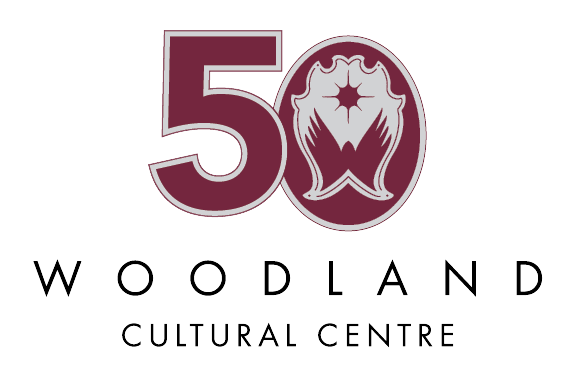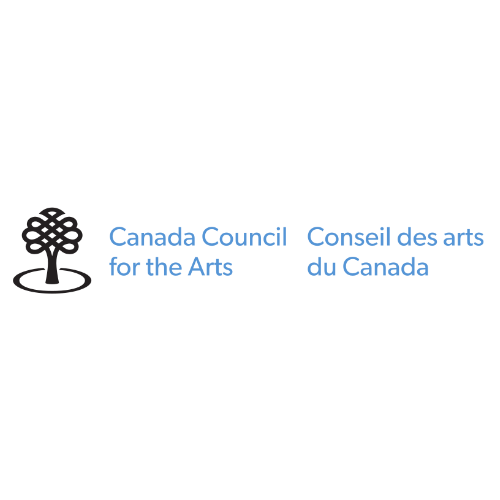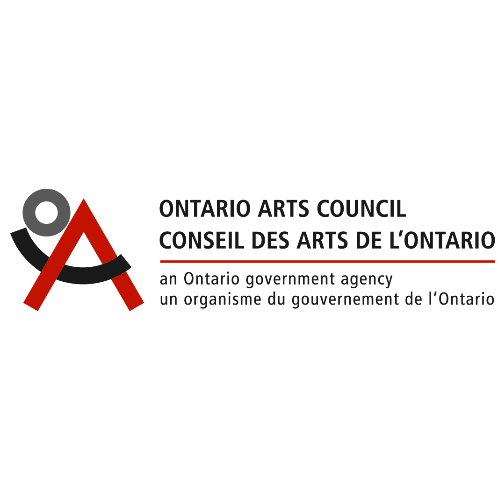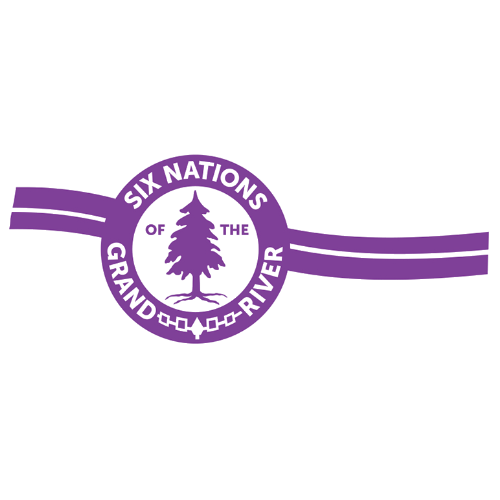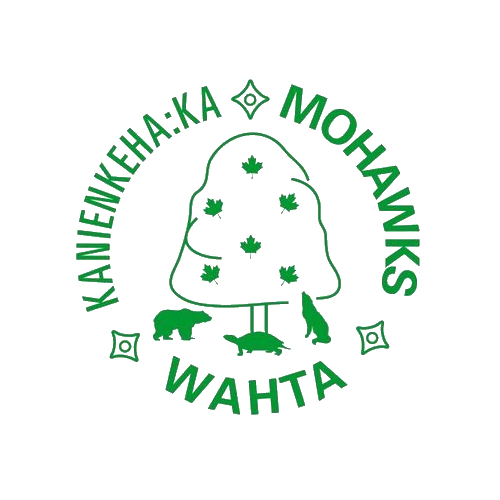FAQ
Frequently Asked Questions
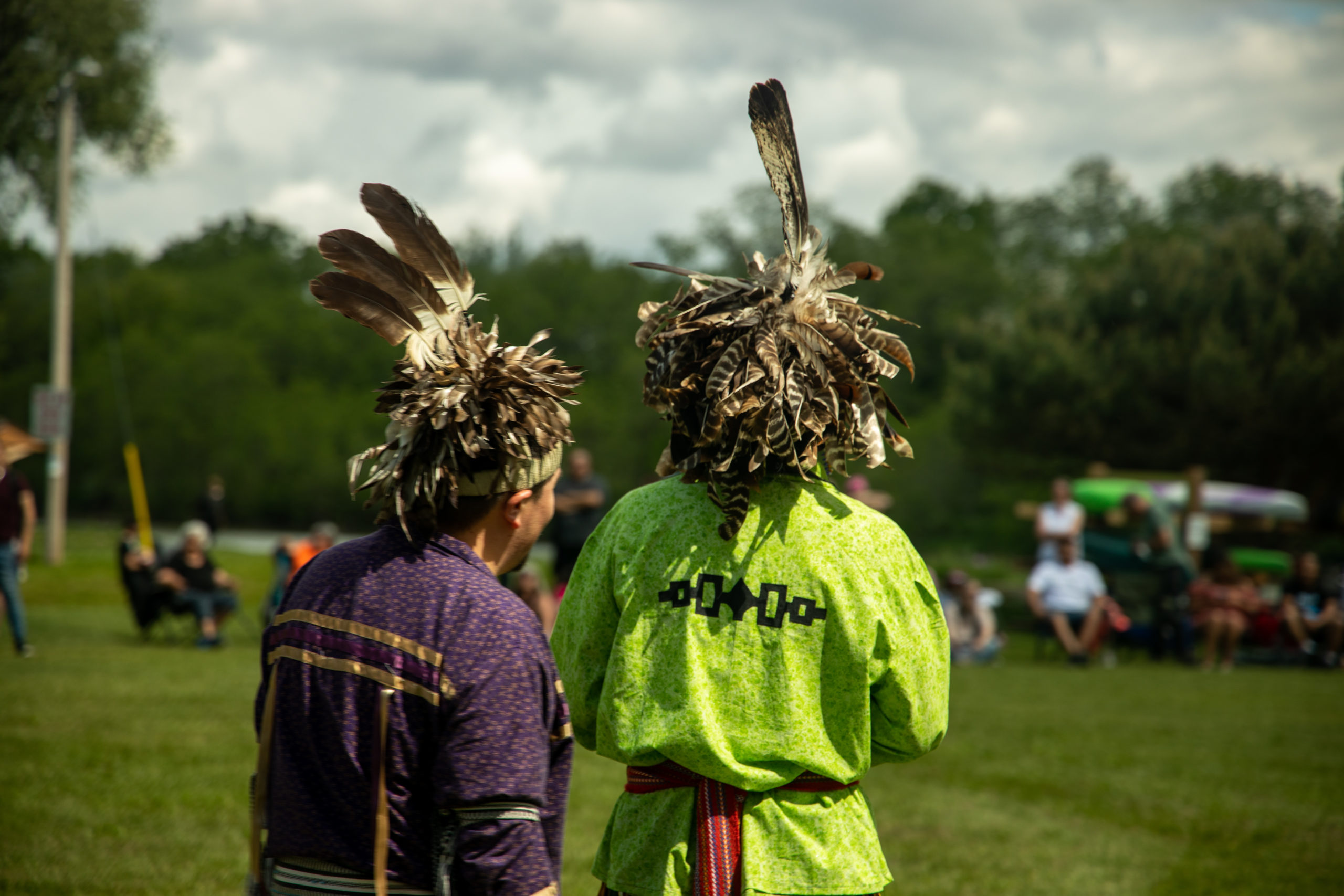
- Who is leading the search of and what have they found?
- The Woodland Cultural Centre is not the lead for the investigation, though we are working with the community at this time. The investigation is being spearheaded by the Survivors Secretariat: https://www.survivorssecretariat.ca/
- The work of the Survivors’ Secretariat is guided directly by Survivors, with the support and assistance of various administrators and experts in their respective fields. They are survivor-led, trauma-informed, and community-involved
- As of November 11, 2021, the Survivors Secretariat have begun searching the portion of the grounds utilizing Ground Penetrating Radar. There are 500 Acres that will need to be searched, and it will take time for the data to be collected. Please consider viewing their press conference here: https://fb.watch/9aoicq1jkK/
- I want to help search the grounds / help support the search of the grounds. How can I help?
- Please direct any and all questions about supporting the search of the grounds, including help with research, administrative work, physical or emotional support, etc., to the Survivors Secretariat. They can be reached through their website or by emailing info@survivorssecretariat.ca
- What types of payment do you accept?
- Our Museum and Giftshop accept Cash, Cheque, Visa, Mastercard, Debit, Google Pay, Apple Pay and American Express.
- In addition to Canadian currency we also accept American, but it is taken at par, not at the current exchange rate.
- We do not accept e-transfers.
- We do not offer cashback.
- Where do I go for the Museum?
- Woodland Cultural Centre’s Museum and Art Galleries are located in the smaller grey building to the left of the property. All guests to the Woodland Cultural Centre must check-in at Museum Reception, located in the Museum Building’s Giftshop.
- The former Mohawk Institute building is not part of the Museum. This part of the property is closed to the public and is an active construction zone. The building will eventually be open for Educational tours as well as for access to Woodland’s Library and Language Departments. To stay up to date on our eventual reopening, consider becoming a Friend of Woodland by subscribing to our e-newsletter, or following our social media!
- Where do I park?
- Woodland offers limited FREE guest parking directly in front of the Museum building. Please ensure to keep the accessible parking space clear for those who require it.
- If spots in front of the Museum building are full, please park up along the drive way as far towards the grass as you can. We have many construction vehicles coming in and out all day, and we want to ensure there is enough space for them to drive safely.
- Please do not park in front of the Canoe installation, as this is reserved for bus drop-offs. Additionally, please ensure to keep the gravel laneway for staff parking clear.
- Tour and school buses are welcome to park on the far side of the roundabout in front of the former Mohawk Institute building.
- How long has the building been here?
- As the Mohawk Institute Residential School:
- The Mohawk Institute was first established in 1828 as a day school for boys; this day school eventually morphed into an industrial school, before becoming The Mohawk Institute Residential School around 1831. The building was first built on the grounds of the Mohawk Village, but was burned down on two separate occasions before the current building was established and put into operation around 1904. The school did not officially close its doors as the Mohawk Institute until June 27, 1970.
- As the Woodland Cultural Centre?
- The Woodland Cultural Centre opened in 1972, under the direction of the Association of Iroquois and Allied Indians. At the time, the Centre was known as the Woodland Indian Cultural Education Centre; the name was changed to Woodland Cultural Centre in 1988. Initially the Centre focused on collecting research and artifacts to establish its Library, Archives and Museum. The importance and significance of the Arts were incorporated and celebrated in the WCC starting in 1975. The Centre continued to grow with the establishment of the Education department in 1983, with the Language department following soon after in 1984. Woodland Cultural Centre has consistently maintained its status as a leader and innovator in Indigenous operated spaces throughout its history.
- As the Mohawk Institute Residential School:
- What is the significance of the Logo?
- The Woodland Cultural Centre logo is based on a mid-eighteenth century trade silver brooch, which was prevalent in Anishinaabe and Haudenosaunee societies. The two eagles represent the two Nations. The stylized hands are based on a prehistoric Woodland design and represent our First Nations reaching for the light — which is the star in the center. The hands are symbolic of holding on to the culture and passing “the light” to future generations. The Centre implemented this logo in 1988 as part of the rebranding of the Centre from its previous incarnation, Woodland Indian Cultural Education Centre.
- How do I become a volunteer?
- Whether you’re seeking a recurring role in one of our unique departments or want to help at a special event, we have a variety of opportunities just for you! From archiving and gardening to crafting and supporting tours, there’s a little something for everyone.
Interested in joining our amazing team? Fill out our Volunteer Application Form here and email it to frontdesk@woodlandculturalcentre.ca. Please note for recurring roles, there may a requirement for a police vulnerable sector check.
We can’t wait to connect you with our captivating options. Come be a part of the Woodland experience!
- Whether you’re seeking a recurring role in one of our unique departments or want to help at a special event, we have a variety of opportunities just for you! From archiving and gardening to crafting and supporting tours, there’s a little something for everyone.
- Do you still host the annual Snow Snake competition?
- Woodland’s annual Snow Snake competition has been cancelled in the past few years due to issues pertaining to climate change. The Winter seasons dramatically shifting weather patterns has made it near impossible to properly plan and execute this beloved event, as the snow often melts before the tracks can be built, maintained, and the competitors allowed to gather. Woodland is hopeful to revive this event in the future, though this will take time as our environment continues to adapt to global warming.
- Woodland’s annual Snow Snake competition has been cancelled in the past few years due to issues pertaining to climate change. The Winter seasons dramatically shifting weather patterns has made it near impossible to properly plan and execute this beloved event, as the snow often melts before the tracks can be built, maintained, and the competitors allowed to gather. Woodland is hopeful to revive this event in the future, though this will take time as our environment continues to adapt to global warming.
- Do you offer traditional medicine to the public?
- Woodland does not currently offer visitors traditional medicines utilized by Onkwehón:we of Turtle Island, except on the occasion of specific events (such as the Survivors Gathering). We recommend contacting Kayanase for your traditional medicine needs.
- Where else should I go or are there other places I should visit?
- Visit our Local Attractions recommendations for some crucial spots to visit in our area!
- Do I need to book a tour to see the Museum?
- The Museum and Art Galleries are open for self-guided tours and visits, and we welcome walk-in admission. Please visit our Experiences for more information.
If you have a large group (10+) and are looking for assistance in planning your arrival, please feel free to contact the Centre’s Visitor Services department by emailing frontdesk@woodlandculturalcentre.ca, or by calling 519-759.2650 x 221.
- The Museum and Art Galleries are open for self-guided tours and visits, and we welcome walk-in admission. Please visit our Experiences for more information.
- How do I book a tour?
- Guided Tours
- For more information about our tours, including the variety of programming we offer, please click here.
- Self-guided tour
- Pre-booking is no longer needed to visit the Museum. Our Museum is open Tuesday – Sunday 10:00am – 4:00pm.
- In person tours of the former Mohawk Institute building are not available as the building is an active construction zone. Due to that status, walking tours of the grounds behind the Mohawk Institute are similarly not offered, except on the occasion of some special events.
- Guided Tours
- How long does it take to go through the Museum as a self-guided tour?
- The average time spent inside the Museum and Art Galleries is 45 minutes. Like all museums, the amount of time spent inside is dependent upon the interest and familiarity of the individual in the content. Some guests have stayed inside for up to 2 hours.
- Can I take photographs/film?
- You are welcome to take photographs for your personal use inside the Museum’s permanent exhibitions, provided you do not use flash photography.
- We request that you do not share photos of the artifacts on your social media. However, if you are here for an event or just want to share your visit, we welcome photos and encourage tagging us in your visits on your social media! Woodland currently has Twitter, Instagram, YouTube, Facebook and Pinterest accounts. We ask that you limit the amount of photographs you might share.
- Photos are not permitted of exhibitions in the galleries
- If you want to film or photograph for a movie, marketing, special project, educational or other commercial use, you MUST contact our Marketing Team at marketing@woodlandculturalcentre.ca. Until you receive a response, you will not be allowed to film or photograph anything pertaining to the Centre.
- Do you have a gift shop?
- Yes we do! We have a number of book resources and shirts, but we are also happy to say that we offer wares from local Indigenous artists and vendors!
- Our gift shop is located in our Museum building and is open during our hours of operation.
- Can I purchase items from your gift shop online?
- Yes you can! You can find our store by clicking here.
- If you were hoping to make a bulk purchase of any items, or had questions about our current stock, please call the Centre directly at 519-759-2650 x 221
- Can I make a donation to the Museum collection?
- Our Museum collection policy has strict outlines of what artifacts we are able to accept into the collection. As such, we are not able to accept donations without reviewing the item’s appropriateness. For more information, please view our Donating to the Collections Page.
- Why is there a Canoe in front of the building?
- This is one of four pieces involved in the 2015 InterNations/InterSections exhibit, featured in partnership with Planet IndigenUS. These four works explore the modes of transportation from an Indigenous perspective. All of these pieces are permanently housed here at Woodland Cultural Centre, although only two are currently on display. These two are…
- “Up the Creek” by artist Kevin Lamure. The canoe rests upon an oil drum. In his artistic statement, Lamure states, “My work is intended to provoke and engage critical thought regarding the broad idea of consumerism and our habitual human nature of worshipping that of which society leads us to believe and makes us comforted and content… Although we all know deep in our thoughts if continued the way it is it will surely be our ultimate sacrifice and demise.”
- “The Haldimand Coupe” by artist Kelly Greene. The Coupe rests on cinder blocks, with part of the Haldimand Treaty included on the hood. In her artistic statement, “…my multi-media work expresses my concerns towards our current environmental dilemma as well as land treaty claims and the injustices suffered by North America’s indigenous people…”
- The two other pieces from this exhibit are…
- “Les Demoiselles d’Arigonon” by Kent Monkman. This piece would be best described as a take on a “Rez Car”; a Cadillac with five stylized and painted wooden figures inside, including Monkman’s glamourous alter-ego, Miss Chief. This work was previously displayed alongside Kelly Greene’s. Unfortunately, Les Demoiselles was vandalized and parts of the installation were stolen in the Spring of 2018, thus is no longer displayed.
- “Hakusteyea” by Douglas Smarch Jr. This piece is a skin boat frame composed of PCD pipes. From his artistic statement, “These frames were originally made of wood and left on lake shores, they were private property used with a canvas covering to cross lakes, ponds and stored at the lakes till next use…This piece does portray adaptability of my own people in our area…it was in a sense a type of modern hide that can be reused and serve as a multipurpose”. This piece is not featured on the grounds due to the lightness of the material.
- This is one of four pieces involved in the 2015 InterNations/InterSections exhibit, featured in partnership with Planet IndigenUS. These four works explore the modes of transportation from an Indigenous perspective. All of these pieces are permanently housed here at Woodland Cultural Centre, although only two are currently on display. These two are…
- What is the large plantlike structure between the Museum and the house?
- This exhibit is known as the Haudenosaunee Solar Longhouse (2012), from the artist Kelly Greene. Part of Woodland’s “sculptural garden” exhibit (known collectively as Earthly Connections), this natural artwork is composed of indigenous trees, vines and grasses surrounding the structural steel beams. Greene chose this combination of materials as an acknowledgement of the agricultural and trades training that was formerly administered by the Mohawk Institute.
- What are the silver globes?
- This artistic installation, known as Basket Series (2012), is by Shelley Niro. This work embodies the connection between the land and the history of basket weaving. The silver colouring is a deliberate marker of the future, as from a distance, the “silver globes” are reminiscent of an almost sci-fi futuristic structure. In this way, Basket Series simultaneously speaks to the past and future, as an ancient practice of cultural importance is not only physically emerging from the earth, it is continuing in the vision of years to come.
- Why is the fence beside the Centre painted with two rows of purple?
- This is not just a fence, but an art installation by artists Vince Bomberry and Peter Cook, entitled GAS-WEN-TAH – Two Row Wampum. The Two Row Wampum is of crucial importance to the Haudenosaunee, as it marks an agreement that was first made with the Dutch, and then later with the British (in the 16th and 17th centuries, respectively). The Two Row Wampum agreement stated that the Haudenosaunee and the Dutch (and then British) were to live in peace side by side, but would not interfere with one another’s lives, cultures, or nations. Just as the Gaswentah is important to Haudenosaunee culture, this installation is important to Woodland’s history as it first appeared in 1992 and was reinvigorated in 2004 as part of the Natural Inclinations series.
- Who painted the mural closer to the road?
- This mural was a community workshop during our Onkwehón:we Festival 2019, arranged by Aboriginal Legal Services and painted primarily by the designer, Brandon Lazore. This mural project invited visitors to the Onkwehón:we Festival to assist in the painting; the design utilizes several wampum important to the Haudenosaunee, bringing the legacy of these agreements to the forefront of our minds and inviting viewers to question what they know about them.
- What were the archaeology diggers doing?
- Archaeology at the Woodland Cultural Centre was undertaken as a pro-bono reconciliation project of the Ontario Archaeological Society and Archaeological Research Associates, Ltd. in partnership with the Woodland Cultural Centre, Save the Evidence and Mohawk Village Memorial Park. Beginning in the spring of 2017, ARA and the OAS have managed the archaeological needs at the Woodland Cultural Centre and the Mohawk Village Memorial Park with volunteers from Six Nations, Mississaugas of the Credit, archaeological consulting firms, archaeological researchers and the general public. All of the artifacts uncovered in the archaeological process will become part of the Centre’s permanent collection.
- What is being built on the other side of the laneway?
- The far side of the grounds is being developed into the Mohawk Village Memorial Park (MVMP), a project undertaken by a small group of Survivors of the former Mohawk Institute. The park is intended to honour the children who attended the Mohawk Institute Indian Residential School. For a more detailed understanding, as well as to see the plans they have for the park, please visit their website.
- What is Woodland’s connection to the MVMP?
- At present, WCC and MVMP work in partnership with a goal to honour those who have come before and to educate those who have yet to come. Financially, the MVMP is a separate organization, and the fundraising they conduct is focused exclusively on the park.
- How do I visit the library?
- Unfortunately at this time the library is still closed to the public.
- Where is your library?
- Woodland Cultural Centre’s Resource Library is located inside the former Mohawk Institute; at this time, the building is still closed to the public. Like the Language Department, the Library and Archives were in extended storage during the reconstruction period. As you can imagine, there are many materials in the collection which require special attention in the unpacking process, so this will take some time before they are open to the public again.
- Can I borrow items from the library once it is open?
- The Woodland Cultural Centre library is a private non-lending library, so unfortunately items cannot be removed from the grounds.
- Can I donate resources to the library?
- Yes! To arrange donations to the library’s collections, please contact library@woodlandculturalcentre.ca.
- Can you help me with my family tree research?
- Prior to the outbreak of the Covid-19 pandemic, our Library partnered with the Ohsweken Genealogical Society to host monthly meetings. Rather, unfortunately, due to internal restructuring to meet Covid-19 occupancy and safety regulations, the room the Genealogical Society utilized for their meetings was remodeled into our Reception and Gift Shop space. It is unclear at this time if the Ohsweken Genealogical Society will host its meetings with the Library in the future, as this will be dependent upon our Library’s reopening date. For all of your genealogical research needs, we recommend reaching out to the Ohsweken Genealogical Society directly.
- Do you offer Native Language classes here?
- Our Language Department does not offer public language programs at this time. The majority of our Language resources were until recently in storage while the former Mohawk Institute was under construction. The department has recently moved back into their office spaces, and is beginning to establish many exciting features, such as the Language Resources Centre and a recording studio.
- How do I access the Language department resources?
- The Language Resource Centre is currently open by appointment only, and as they are still in the unpacking process, appointments are limited. Please contact language@woodlandculturalcentre.ca regarding resource access questions.
- Make a one-time or monthly donation & receive a charitable tax receipt
- Host a Fundraising Event
- By planning your own fundraiser for the Woodland Cultural Centre, you are helping to ensure we can continue to develop and provide programming and resources to our communities, our schools, and the public; it will also ensure that we continue to grow and thrive as a Cultural Centre. We’re here to help make sure your fundraiser is successful! We can provide tax receipts, letters of support, marketing materials, promotion of your event and much more. Reach out to development@woodlandculturalcentre.ca for more information
- Fundraiser Registration Form
- What is #SaveTheEvidence?
- Save the Evidence is a campaign to raise awareness and support for the restoration of the former Mohawk Institute Residential School and to develop the building into an Interpreted Historic Site and Educational Resource. As a site of conscience, the final goal is to create a fully-realized Interpretive Centre that will be the definitive destination for information about the history of Residential Schools in Canada, the experiences of Survivors of the schools, and the impact that the Residential School system has had on our communities. In March 2022, we announced that the funds have been successfully raised for the final phase of the campaign! To learn more about the history of the campaign and read our final e-newsletter, click here.
- Who ran the Mohawk Institute Residential School?
- From roughly 1828 – 1922, the Mohawk Institute operated under the direction of The New England Company (NEC, from roughly 1828 – 1922), which itself was part of the Anglican Church. After 1922 a leasing agreement was arranged with Indian Affairs Canada, wherein the Canadian Government would take over the school’s operations so long as the Principal continued to be of Anglican faith; NEC was still involved in the financial support of the residential school. The Government of Canada did not assume complete control over the Mohawk Institute until 1969, and then only because the school had become too costly for NEC to continue operations. The school closed in 1970.
- Is the Residential School Building open for tours?
- No. Although staff are now able to work inside the building, the building is not open to the public. We are now anticipating the building will not be open to the public until Spring of 2025. This goal is in consideration not only of the culturally interpreted spaces for those seeking the history of the Mohawk Institute Residential school, but also in recognition of the ongoing work of our Library and Language departments, as they were in storage during construction and will need time to be set up again.
- In the interim we currently offer a monthly public virtual tour, and we offer private screenings which can be booked for groups through our Education Department.
- When did the Save the Evidence campaign begin?
- Save the Evidence initially began as an endeavour to restore the roof of the former Mohawk Institute in 2014. As the costs associated with restoring and repairing the roof began apparent, the question quickly morphed into the question of if the building should be restored or not. After community consultation, the overwhelming response was to restore the building in order to preserve its history and educate future generations. Save the Evidence fundraising is now complete! Woodland Cultural Centre was able to successfully reach our goal in order to restore the former Mohawk Institute. We are so grateful for the support of our giving community; we couldn’t have done this without you!
- Save the Evidence initially began as an endeavour to restore the roof of the former Mohawk Institute in 2014. As the costs associated with restoring and repairing the roof began apparent, the question quickly morphed into the question of if the building should be restored or not. After community consultation, the overwhelming response was to restore the building in order to preserve its history and educate future generations. Save the Evidence fundraising is now complete! Woodland Cultural Centre was able to successfully reach our goal in order to restore the former Mohawk Institute. We are so grateful for the support of our giving community; we couldn’t have done this without you!
- How far along is the Save the Evidence Campaign?
- The Save the Evidence Campaign is officially wrapped! We have successfully reached our fundraising goal of 23.5 million to restore the former Mohawk Institute building.
- The campaign was initially broken down into three phases, though as the project progressed it became apparent that we needed a fourth phase.
- We have successfully fundraised and completed Phase One which was for the roof, the asbestos/mold abatement, and the front porch.
- We have successfully fundraised and completed Phase Two, which was for the mechanical upgrades inside of the building (including Electrical, HVAC, and Plumbing). This Phase was completed on March 21, 2019, utilizing $6.9 million.
- We are now fully funded for Phase Three. This is to complete ongoing construction, the installation of windows, masonry, staff space and the interpretation centre for the Residential School.
- We are now fully funded for Phase Four, which is for the interior development of the culturally interpreted historic spaces, for the recording of Survivor Stories and testimonies, etc.
- How can we donate to the Save the Evidence Campaign?
- We are no longer accepting donations for the Save the Evidence campaign.
- To find out how you can continue to support the Woodland Cultural Centre and all the other exciting projects we have going, click here!
- Do you have the records from the Mohawk Institute?
- Rather, unfortunately, the Woodland Cultural Centre does not have a complete list or master registry of the former “students” of the Mohawk Institute. We have some information, much of it put forward by self-identified Survivors and intergenerational survivors, but it is extremely limited.
- We do have a plaque inside the former Mohawk Institute building, bearing an incomplete list of Survivor’s names and years of attendance; these names were compiled through the hard work of one of the Survivors of the Mohawk Institute, Geronimo Henry. The information from this plaque was based on the limited information available at the time, as his research was done prior to the Indian Residential Schools Settlement Agreement.
- Where would a Survivor or family of a Survivor go to access their records?
- There are two great resources for Survivors and families trying to find copies of their records.
- The Truth and Reconciliation Commission, otherwise known as the National Centre for Truth and Reconciliation. They have a form for intergenerational survivors they require to be filled out in order to receive a copy of records or statements of attendance, and they also need either consent from the Survivor or proof of death.
- https://nctr.ca/
- NCTRrecords@umanitoba.ca
- Phone: (204) 480-1091
- The National Residential School Survivor Society, otherwise known as the Shingwauk Project. Their archival research available online has numerous documents and photographs that may be of assistance to you in your research.
- http://www.nrsss.ca/Resource_Centre/Resource_Centre_Index.htm
- ShingwaukDG@algomau.ca
- Phone: (705) 949 – 2301 ext. 4622
- The Truth and Reconciliation Commission, otherwise known as the National Centre for Truth and Reconciliation. They have a form for intergenerational survivors they require to be filled out in order to receive a copy of records or statements of attendance, and they also need either consent from the Survivor or proof of death.
- We would also recommend reaching out to the Ohsweken Genealogical Society, or your local genealogical society if your family is not from the Six Nations area.
- There are two great resources for Survivors and families trying to find copies of their records.
- I want to do a fundraiser event, what do I do?
- Thank you for your interest in supporting the Woodland Cultural Centre! Please start by completing our registration form for third-party fundraisers here
- Due to the grounds searching happening at the site of the former Mohawk Institute, we cannot currently accommodate any events happening on-site at the Woodland Cultural Centre. We apologize for the inconvenience.
- If you have any questions, please don’t hesitate to reach out to our Development Coordinator, Trisha Kelley at development@woodlandculturalcentre.ca or 519-759-2650 x 232
- Read the 94 Calls To Action provided by the Truth and Reconciliation Commission
- You can find the Calls to Action here and also visit the TRC website for many additional resources regarding the Truth and Reconciliation Report.
- Educate Yourself About Indigenous Histories and Cultures
- The legacy of Residential Schools is part of Indigenous history, but it is not part of Indigenous culture. Educate yourself on the people’s culture of the traditional territory you live on. Listen, watch, and read!
- Educate Yourself About the History of Residential Schools
- Woodland Cultural Centre provides numerous resources about residential schools, including our monthly tour of the former Mohawk Institute Residential School.
- We also recommend checking out the Witness Blanket, by artist Carey Newman, at the Canadian Museum for Human Rights and the documentary, Picking Up The Pieces, that Newman created to go along with the project.
- Sharing The History
- As much as it’s important to educate yourself, what you do with that information is also important. Share the history with your family, friends, workplaces, service organizations, and faith groups! These conversations can be difficult to have but they are essential. We need to ensure that future generations of children are being properly educated on Indigenous history, culture, and contemporary existences.
- Support Indigenous Communities, Like Tk’emlúps te Secwépemc, in Their Journey of Truth and Reconciliation
- A donation can go a long way for these communities!
- Consider visiting websites such as Project of Heart
- or the Legacy of Hope
- Don’t forget to take care of yourself, www.ahf.ca
- I emailed/left a voicemail with a staff member and have not received a response.
- The Woodland Cultural Centre is a very small organization and while our staff are working hard to respond to all inquiries in as timely a manner as possible, the significant increase in all inquiries has resulted in an unfortunate delay in all correspondence. Please allow for a minimum of 7 business days. We thank you for your patience and understanding.
- I am a reporter and would like to interview a staff member or Survivor of the Mohawk Institute.
- Please contact marketing@woodlandculturalcentre.ca. Please anticipate several business days delay for all requests; for that reason, we strongly discourage requests for same-day interviews.
- Do you sell “Every Child Matters” Orange Shirts?
- We have limited stock remaining in our gift shop. Visit us in store or in our online shop!
- I am looking to purchase a large amount of shirts/sweatshirts, what is the best means of doing this?
- Please reach out to frontdesk@woodlandculturalcentre.ca to coordinate a bulk shirt order.
- Where do I find the sizes and availability?
- We have included a size chart in the order forms, and have added size charts to our online store item photos.
- How do I order from your online store?
- View our online store at the following link.
- I am on the online shop but unable to add my size to the cart. What do I do?
- If the selected size is “greyed out”, this means that the size you need is currently out of stock.
